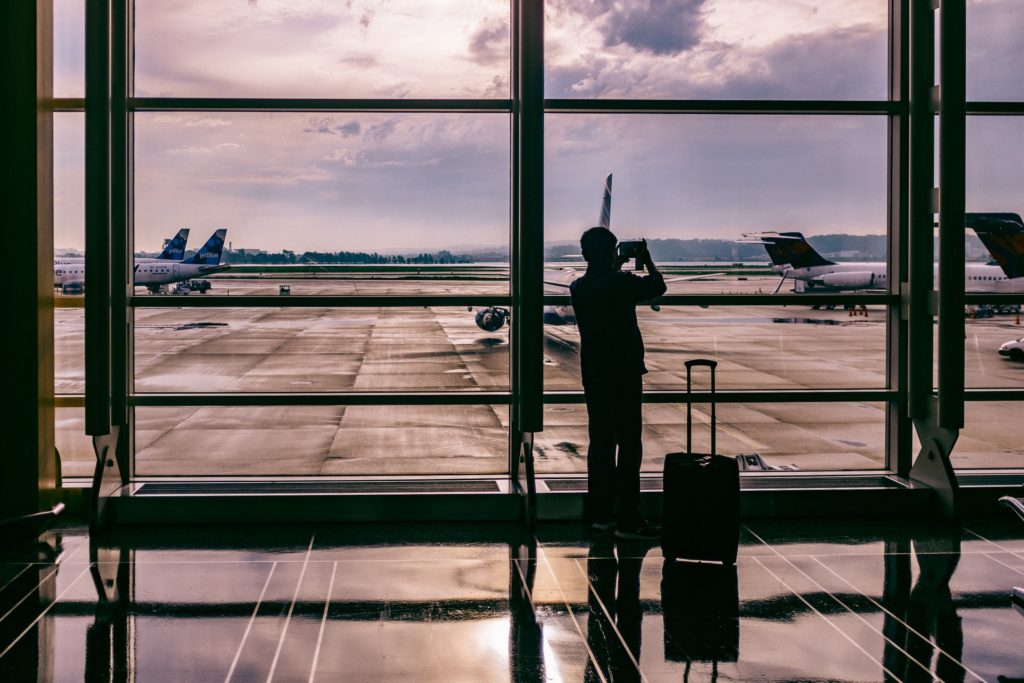
Biometric data collection is an important part of the Australian visa application process for certain visa types and applicants from / in specific countries. This blog post provides an overview of what biometrics are, how they are collected, and why they are required for visa processing.
What Are Biometrics?
Biometrics are unique physical characteristics used to verify a person’s identity. For Australian visa purposes, this includes:
- A digital photograph of the applicant’s face
- Fingerprint scans of all 10 fingers
Biometric data helps the Department of Home Affairs (the Department) confirm an applicant’s identity, prevent identity fraud, and strengthen border security.
Who Needs to Provide Biometrics?
Visa applicants must provide biometrics if they:
- apply for a visa that is part of the biometrics program; or
- are in a country that is part of the program.
When a visa application is lodged, the Department will issue a Request letter – “Requirement to provide personal identifiers (biometrics) for the purposes of section 40 of the Migration Act 1958”. This letter will contain instructions on where and how to complete the process including your Visa Lodgement Number (VLN).
Generally, you will have 14 calendar days to complete this. If you do not complete this within the specified timeframe, you can provide reasons as to the reasons why for the delay or why you are unable to complete this. If biometrics are not completed, the visa application may be refused.
Where to Provide Biometrics?
Biometrics must be provided at an Australian Biometric Collection Centre (ABCC).
- Outside Australia: Applicants must visit an ABCC listed under Australian Offices outside Australia.
- In Australia: You will need to attend a processing office and advise them that you are onshore.
Biometrics Collection Process
What to Expect at the Appointment
- A digital photograph will be taken.
- Fingerprints of all ten fingers will be scanned using a digital scanner.
Special Considerations
- Children under 16 or individuals who cannot understand the biometric process must be accompanied by a parent or guardian.
- Children under 5 (if outside Australia) and children under 10 (if in Australia) only need to provide a photograph – no fingerprints required.
- If you have facial or fingerprint injuries, you must wait until they heal before attending your appointment.
- Religious head coverings or glasses may need to be removed for the photograph. However, arrangements can be made for private collection or for a same-gender officer to assist.
Biometrics Collection Fees
Fees vary depending on the service provider and location. Applicants should check the specific ABCC for cost details.
Why are Biometrics Required?
The Australian Government uses biometric data to:
- verify a visa applicant’s identity
- protect against identity fraud
- ensure safer travel to Australia
- strengthen Australian border security
Biometric information is securely stored in accordance with the Migration Act 1958 and the Privacy Act 1988. It may be shared with other authorised Australian or international agencies for identity verification, criminal history checks, and protection assessments. Only authorised officers can access this data.
Which Visas Require Biometrics?
| 100 – Partner | 300 – Prospective Marriage | 494 – Skilled work (Employer Sponsored) |
| 101 – Child | 309 – Partner (Provisional) | 500 – Student |
| 102 – Adoption | 400 – Temporary Work (Short Stay Specialist) | 572 – Vocational Education and Training Sector |
| 114 – Aged Dependent Relative | 403 – Temporary Work (International Relations) – Government Agreement, Foreign Government, Domestic Worker (Diplomatic/Consular), and Privileges and Immunities streams | 573 – Higher Education Sector |
| 115 – Remaining Relative | 407 – Training | 590 – Student Guardian |
| 116 – Carer | 408 – Temporary Activity – Invited Participant, Australian Government endorsed event, exchange, sport, religious worker, domestic worker (executive), special program, entertainment activities and research activity types | 600 – Visitor Visa |
| 117 – Orphan Relative | 445 – Dependent Child | 602 – Medical Treatment |
| 200 – Refugee | 461 – New Zealand Citizen Family Relationship (Temporary) | 771 – Transit |
| 201 – In-country Special Humanitarian | 462 – Work and Holiday | 785 – Temporary Protection |
| 202 – Global Special Humanitarian | 482 – Skills in Demand | 790 – Safe Haven Enterprise |
| 203 – Emergency Rescue | 482 – Temporary Skill Shortage | 866 – Protection |
| 204 – Woman at Risk | 491 – Skilled Work | 870 – Sponsored Parent |
Which Countries Are in the Biometrics Program?
Applicants from certain countries must provide biometrics, regardless of their nationality.
| Afghanistan | Ethiopia | Kuwait | Papua New Guinea | South Africa |
| Albania | Fiji | Lebanon | Peru | Sri Lanka |
| Algeria | France | Lesotho | Philippines | Thailand |
| Bahrain | Ghana | Malaysia | Qatar | Tonga |
| Bangladesh | Greece | Mexico | Republic of Korea | Turkey |
| Bhutan | Hong Kong | Myanmar | Russian Federation | Uganda |
| Bosnia and Herzegovina | Iran | Nepal | Samoa | United Arab Emirates |
| Cambodia | Iraq | New Zealand | Saudi Arabia | Vanuatu |
| Colombia | Jordan | Nigeria | Singapore | Vietnam |
| Egypt | Kazakhstan | Oman | Solomon Islands | Yemen |
| Eswatini | Kenya | Pakistan | Somalia | Zimbabwe |
If you receive a request for biometrics, ensure that you complete the process promptly to avoid visa processing delays. Always check your Request letter for specific instructions and attend an approved ABCC.
Any questions?
If you have any questions about biometrics, feel free to contact us by email at [email protected] or phone +61 3 9016 0484.


Hello, I’m a Ghanaian..I’ve applied for a working visa through a traveling agency recruiting workers to Australia and it’s been granted, the company says we are about to go and submit our biometrics..I want to know if that’s the right process..because I taught without biometrics no visa can be granted..thank you.
Hi Richard,
Biometrics usually need to be provided prior to visa grant.
Feel free to contact us at [email protected] if you want to discuss your matter further.
Kind regards,
Hannan Tew
Hi,
I have recently been asked by the DFAT to provide Biometrics of all my family members including myself by personally visiting the ABCC in one of the neighboring countries such as Pakistan. I am currently living with my family in Afghanistan, will you please kindly let me know how to take an appointment to provide our biometrics in Islamabad of Pakistan?
Looking forward to your soonest response.
Regards,
Aimal Ahmadzai
Hi Aimal,
Biometrics are collected by VGS GLobal in Pakistan: https://visa.vfsglobal.com/pak/en/aus/
Kind regards,
Hannan Tew